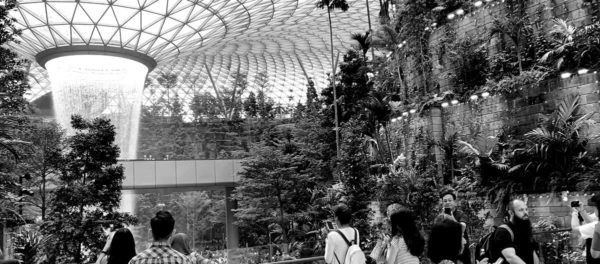In Asian retail, experience is everything. Starfield Hanam, for example, boasts car innovation centres and digital sports facilities. It has a 25,000 m² spa on the roof. These aren’t things you’d expect to find in a regular shopping mall. Funan Mall in Singapore has climbing walls, cycle routes, lecture theatres, fitness rooms and a rooftop urban farm. And the extraordinary retail development at the heart of Singapore Changi Airport, the Jewel, where Benoy led retail planning, features a live waterfall and rainforest (seen above).
Crucially, this bold mix of uses, spaces and experiences isn’t just about aesthetics. It also drives footfall and sales. At Jewel, for example, virtually every one of its 280 retail locations is occupied by top international brands and cool local independents. And its target of 40 million visitors in the first year was surpassed in under six months. Across Asia, in non-COVID times, retail destinations are full to bursting on a regular basis.
The logic is simple. Build it beautiful, build it different, and people will come. Good placemaking leads to improved experience, which leads to increased dwell time and spend. Indeed, studies show that a 1% uplift in dwell time boosts sales by 1.3%. It’s a win-win situation; the perfect marriage of aesthetics, experience and commerce. And it could hold the key to post-pandemic retail recovery.





